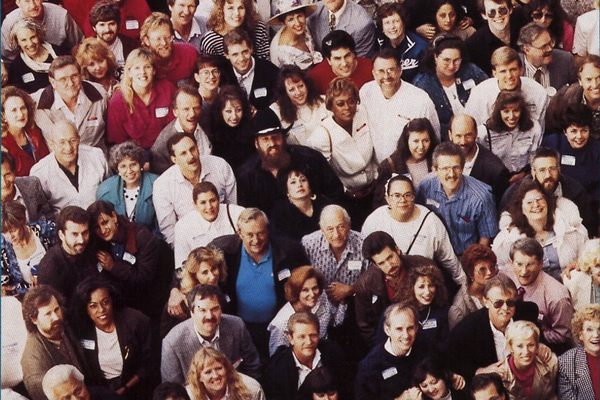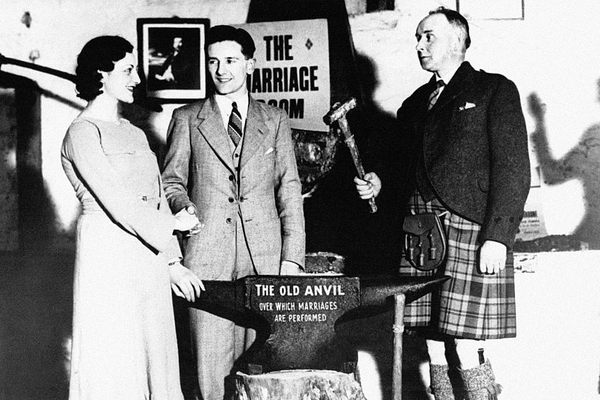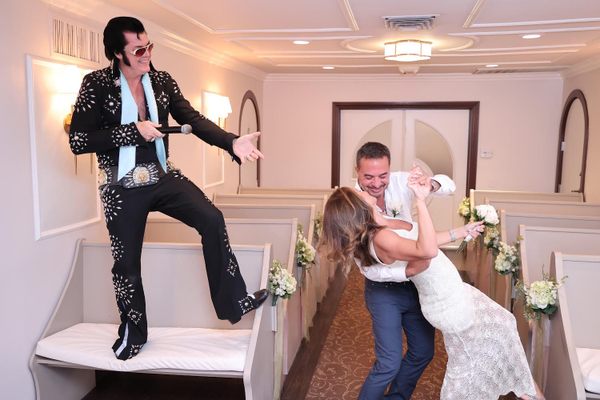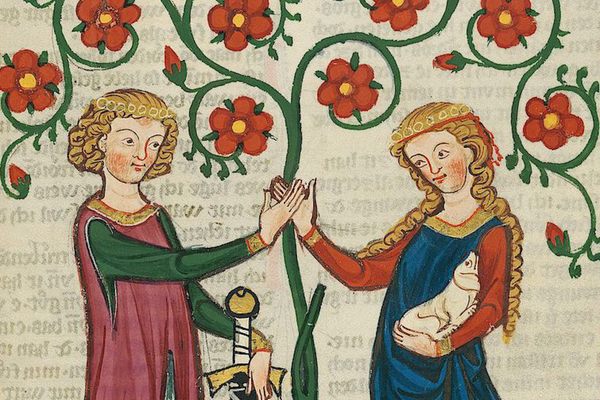The Awkward 17th-Century Dating Practice That Saw Teens Get Bundled Into Bags
And a wooden board separating the lovers in bed.

If today’s complicated dating world disturbs you, imagine being a young woman in love in 17th-century Wales. You can’t wait to begin your life with your beau, but first, you need to prove to your parents that you’re ready to marry—by being bundled up in a sack and put to bed.
This unusual courtship ritual had a standard format. Step one: invite your date home to meet your parents. Step two: watch in horror as your mother ties you up from feet to waist in a heavy sack. Step three: get into your parents’ bed fully clothed next to your date under the watchful eyes of your parents, who place a thick wooden board between you and tuck you in for the night.
This practice would generally keep today’s young person from ever dating again, but bundling seems to have been popular in Ireland, the rural United Kingdom, and the New England colonies from the 16th into the 18th century. William Bingly in his travelogue North Wales described how the “lover steals, under the shadow of the night, to the bed of the fair one, into which (retaining an essential part of his dress) he is admitted without any shyness or reserve.”
In the heyday of bundling, ideas surrounding marriage and bedrooms were far removed from the privacy we currently hold dear. Bedrooms were semi-public spaces until roughly the late 18th century, and were used for anything from giving birth to entertaining guests. Bundling, which usually involved adolescents, just added one more ritual to the bedroom’s list of uses.
When two teens were interested in one another, if both sets of parents approved, the girl’s parents invited the boy to the home, often on Saturday nights, and bundling process began. The bundling bag, a readily available, makeshift chastity device, was normally tied around the lower half of the girl’s body, though some accounts claim that each young person was placed into a bundling bag up to their necks, if possible.

But not everyone was in favor of letting their kids sleep in a bed with the opposite sex. Bundling drew ire from contemporary religious leaders and later from historians in Victorian England. In the 19th century, Henry Reed Stiles writes in his history of Connecticut that bundling “sapped the fountain of morality and tarnished the escutcheons of thousands of families,” though in Holland, where a similar practice was called “queesting”, it was hardly ever abused.
Contemporary preacher Jonathan Edwards outwardly spoke against bundling as a risky practice teetering on the edge of dangerous promiscuity, writing that this seemingly new sexual awakening of common people would “ruin a person’s reputation and be looked upon as sufficient evidences of a prostitute” had it happened in any other country; he also worried about pregnancies preceding wedlock.The latter was probably a legitimate fear; pregnancies following bundling weren’t unheard of, and one in 10 of every first child born in colonial America was born eight months after marriage. One poem of the time, reprinted by Stiles, serves as a cautionary tale:
A bundling couple went to bed
With all their clothes from foot to head;
That the defense might seem complete
Each one was wrapped in a sheet
But oh, this bundling’s such a witch
The man of her did catch the itch,
And so provoked was the wretch
That she of his a bastard catch’d.
If this happened, of course, the family knew who the child’s father was, and a marriage was often secured immediately to save the daughter’s reputation. In Tudor England’s lower economic classes in particular, premarital sex was less of a social issue; simple contracts signed by the betrothed fathers, along with the town’s general acceptance of the union, was usually enough to officiate marriage.
According to the Dictionary of the Vulgar Tongue in 1811, bundling also was “an expedient practiced in America on a scarcity of beds, where, on such occasions, husbands and parents frequently permitted travelers to bundle with their wives and daughters.” More than likely, the head of the household would share his bed first; some people made or bought beds with an easily inserted bundling board so they could rent out half a bed to travelers with ease.
The origins of bundling may have come, as Stiles suggested, from a simple lack of fuel and cash in the cold winter months. Others believe its use as a legitimate marriage bolster originated from the story of Boaz and Ruth in Judeo-Christian religious texts, as social historian Yochi Fischer-Yinon described in his article The Original Bundlers. In the story, wealthy landowner Boaz and widow* Ruth spend a night getting to know one another on a thatched floor by talking and sleeping only, before committing to a happy marriage.

Bundling became so attractive to some parents in the 1960s that it was briefly revived, and was used in religious Christian communities including Amish culture. A tongue-in-cheek article of Christianity Today in 1969 described a student group called “The Society to Bring Back Bundling”, and according to Fischer-Yinon, bundling was seen as “a nostalgic attempt to provide a warm, safe and ‘decent’ alternative to the sexual encounters of young couples taking place in parked cars or deserted places.”
But bundling was a more revolutionary approach to love than it looks to modern couples. Historian Lucy Worsley points out that bundling “was a step along the way towards your spouse being a matter of personal choice rather than someone picked out for you by your parents.” Bundling meant that the virtues of the young couple were maintained, but they could experiment with one another, talk late into the night, and learn what it would be like to spend hours with just one person, waking up next to them in the morning.
Despite its possible benefits and in part because of its definite weirdness, bundling fell out of fashion at the turn of the 19th century. Victorian sensibilities disapproved of premarital bed-sharing for couples, bedrooms became more private spaces, and better heating erased the need for body warmth.

While professional cuddlers have taken up the mantle for public bed-sharing these days, as a business model and cultural practice it’s a far cry from the weird dating world of yore. Most of the modern U.K. and U.S. probably don’t mourn the loss, preferring to find their true loves sans bag and board—but for those of you who wish to get back to the good old days of dating, you could always give this style of authentic courtship a try.
*Correction: We originally referred to the biblical Ruth as a maiden; she is, more accurately, a widow.







Follow us on Twitter to get the latest on the world's hidden wonders.
Like us on Facebook to get the latest on the world's hidden wonders.
Follow us on Twitter Like us on Facebook